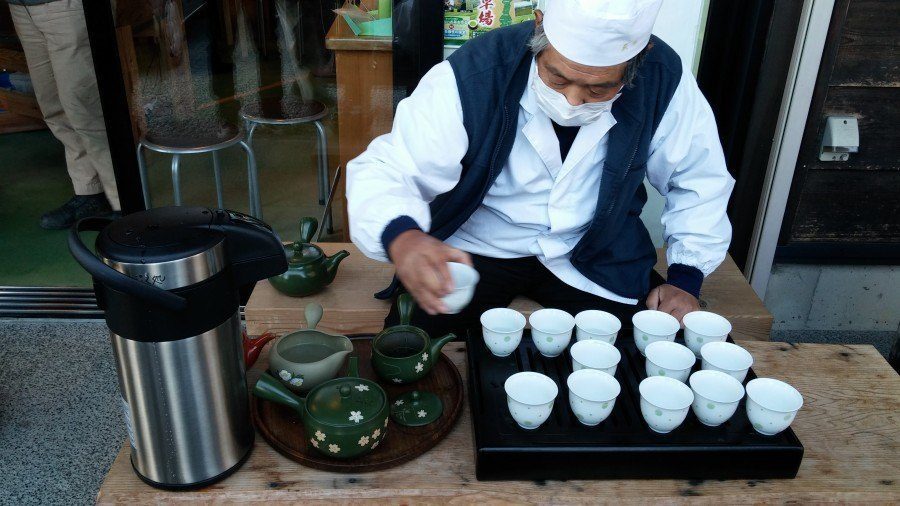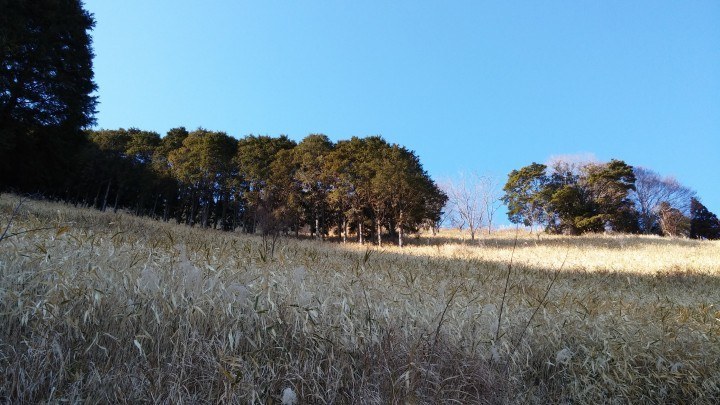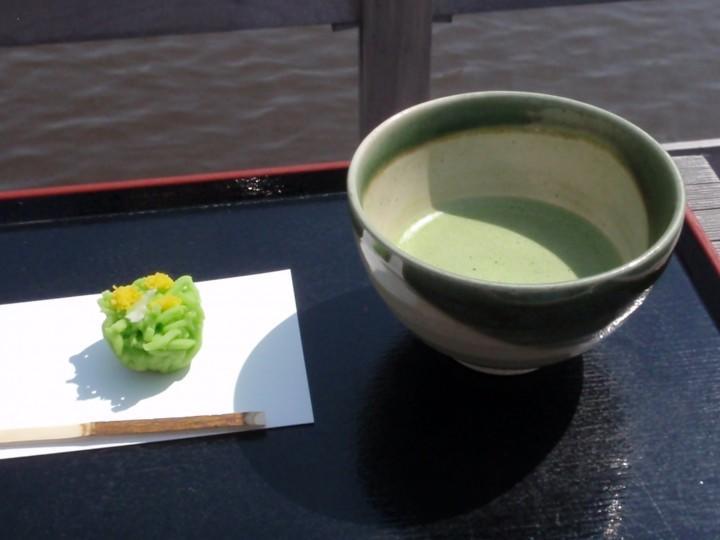Like this post? Help us by sharing it!
While I was on my last Japan trip I had the opportunity to visit a tea farm in Shizuoka prefecture, along the Kurigatake mountain route. I stopped at Higashiyama-Ippuku-dokoro to find out more about Japanese green tea production, work in the tea fields, the ecosystem of the area, and how green tourism could support this cultural and economical landscape. 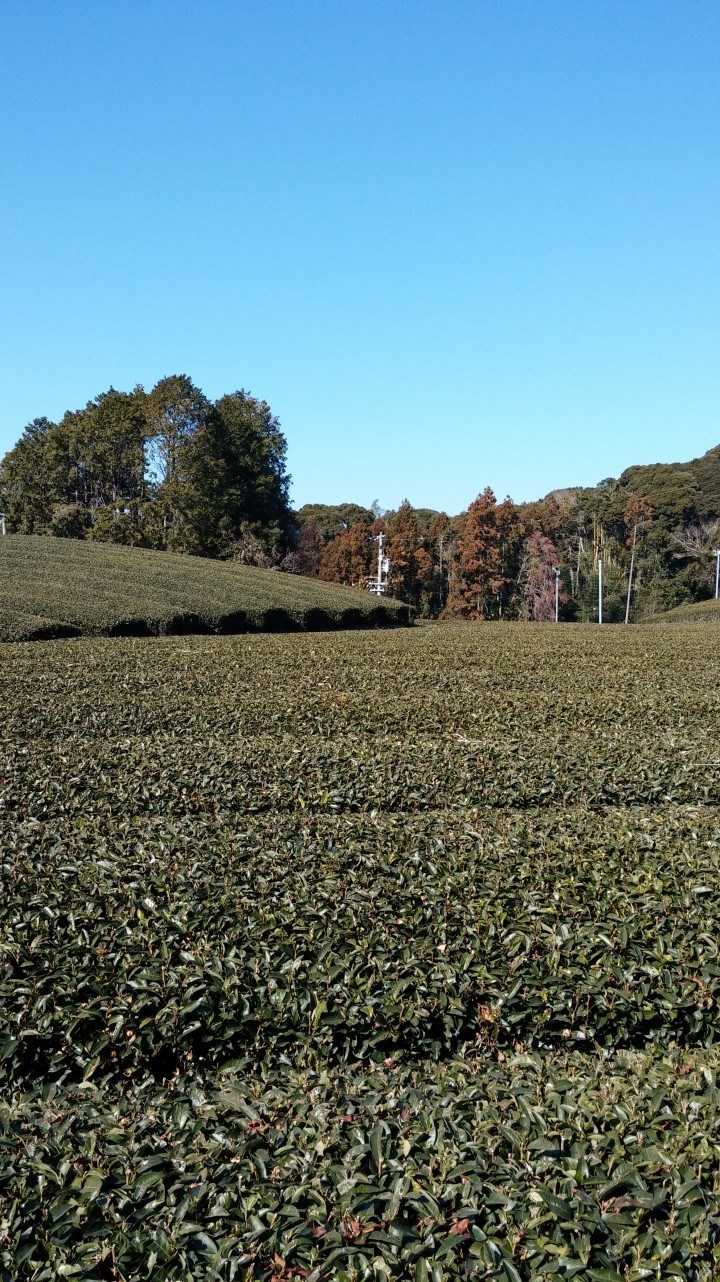
Shizuoka is the larger producer of green tea in Japan; tea farming in this area boomed after the end of the shogunate, in the mid 19th century. The secret to the local excellent and aromatic tea lies in the quality of this environment, the loving care lavished on the fields, and the careful processing of the leaves.
The steep sides of the mountains here are covered with “chagusa”, a type of reed that’s harvested, dried, crushed, and used as mulching between rows of evergreen tea plants.
The landscape in this area revolves around tea: ideally there should be a 1:1; ratio between tea fields and grassland. Using this kind of mulching protects the soil from rain so that nutrients are not washed away too quickly, it softens the soil up as it decomposes, and improves the taste of tea too. It is a sustainable way to mulch that also helps preserve the biodiversity of this environment, as no chemicals are needed to control weeds.
Mulching usually happens once a year, around mid-January, so I had a chance to help too. You grab a bag full of chopped up chagusa, open it up at the start of a line, and walk backwards in between two rows of plants, shaking the bag as you go to distribute mulching evenly.
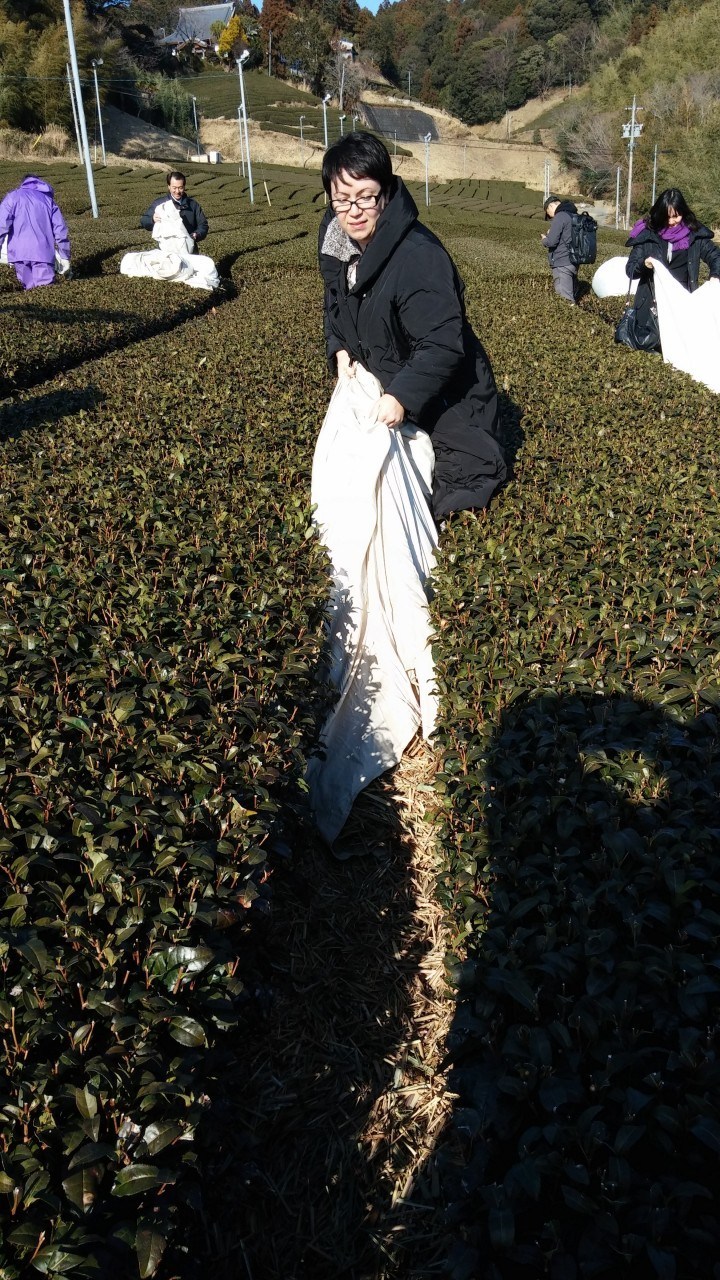
This area receives lots of sunshine, and that influences the production of different kinds of tea as well. Exposure to the sunshine will cause the leaves to harden; they will then need to be steamed for longer, which results in a stronger tea. Otherwise it is possible to protect the young leaves with screens, to obtain delicate “gyokuro” tea.
In any case, only the top couple of inches of the plant are picked. The leaves are then steamed, rolled, and dried. Steaming preserves the vivid colour and nutrients of tea, which boosts a high vitamin C and antioxidants content amongst other benefits.
Rolling the leaves breaks down their tissues, and allows better extraction, for a fully flavoured, stronger infusion. The leaves are rolled on a low table: the surface is actually made of strong “washi” paper, and there’s a heating element underneath, to help evaporate moisture from the leaves. The surface of the table is silky smooth, slowly polished and rubbed by calloused hands and fragrant leaves.
There’s different ways to roll the tea leaves at different stages… and they all take a long time! The whole cycle takes several hours to complete, and by the end of our day one of the gentlemen rolling tea was complaining about his sore back and arms. He was 89 mind you, and had been rolling tea leaves since before you and I were born, so I think he had every right to complain.
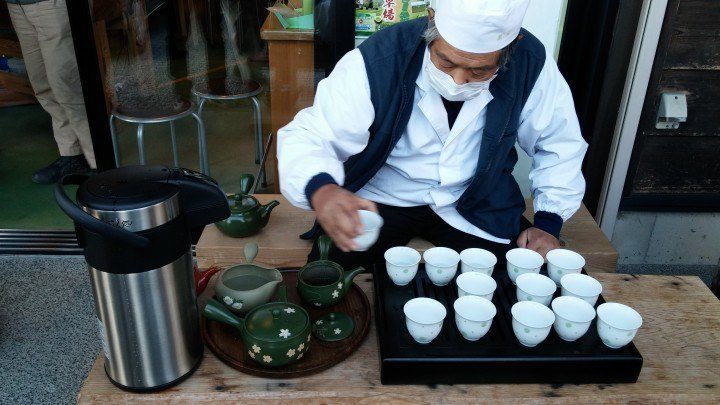
Tea that is harvested and processed by hand in small batches rather commands a rather high price of course, but it has a fuller flavour and much better taste… or so the tea experts say! All I know is that it was delicious!
High quality green tea is not as bitter or astringent as cheaper varieties, and goes beautifully together with traditional Japanese sweets. It can be used in different dishes too: on that day I enjoyed a delightful lunch that included buckwheat and green tea noodles, deep fried salmon coated in breadcrumbs and tea leaves, and of course copious amounts of jade green, aromatic tea.
As most rural areas in Japan, Higashiyama suffers from depopulation and ageing while younger generations leave to find jobs in the big cities. Green tourism could help keeping local traditions, products and cultivars alive, with renewed appreciation for these beautiful landscapes and the local high quality produce; so I hope this blog inspires you to take a little detour from the main tourist routes into new, rewarding experiences……anyone for tea?


